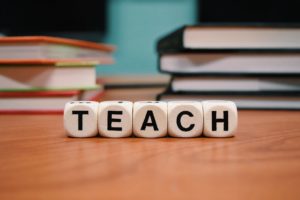
Photo from Pixabay
About Me : I started teaching 4 years ago and as I worked through the curriculum I constantly found myself realizing that I missed several competencies throughout the year. This wasn’t the case with just one subject but what seemed like every subject. How does one manage to teach all concepts and competencies within the year to all students at a sufficient level? I knew there had to be a better way. I reached out to district level coaches and learned about cross-curricular teaching. I discovered that subjects areas weren’t separate but in fact overlapped by teaching literacy concepts during science lessons or teaching mathematical concepts during social studies lessons. I found when I started to dig deeper for myself into what the curriculum meant to me my students in return had increased engagement, excitement and practical understandings of what we learning within the classroom.
Some things I’ve learned so far:
Cross-curricular teaching is not a new concept; in fact, it has been researched and developed since the before the 1990’s. In both Denis

Photo from Pixabay
Haye’s 2010 article The Seductive Charms of Cross-Curricular Approach and Robert J Marzano’s 1991 article Fostering Thinking across the Curriculum through Knowledge Restructuring the inherent need for cross curricular teaching was born from the lack of higher level thinking demonstrated by students. This concern was brought to the government level in both Hayes and Marzano’s articles which highlights that there were fundamental aspects of education that were missing from the current system. Despite these articles being 20 years apart, they both still note that simply teaching content isn’t enough of an education to create a holistic and well around citizen of society. Hayes argues “[a]s children are continually on a self-discovery tour, it is essential for them to know who they are, how they should best relate to others and their role as ‘world citizens’, rather than just being able to reach academic targets” (p. 386). To aid this, cross-curricular teaching focuses on concepts such as meaning, peer projects, higher level thinking, student lead interests, inquiry, themes and issues. It allows students to take control and defend their thinking about the content as opposed to simply regurgitating information that was given to them. Marzano states “that for knowledge to be restricted and higher level thinking fostered, students must use knowledge within tasks over which they have some control and which match personal goals or needs” (p.519). Cross-curricular learning allows for this to happen by providing student choice and peer interaction. Not only are they learning the content required of their grade level, but they are learning skills such as time management, organization, communication and compromise which are concepts that are hidden within the curriculum. So why is it not done in every classroom?
Reference List:
Hayes, D. (2010). The Seductive Charms of a Cross-Curricular Approach. Education 3-13, 38.(4), 381-387. DOI: 10.1080/03004270903519238
Marzano, J. Robert. (1991). Thinking and Learning Across the Curriculum through Knowledge Restructuring. Journal of Reading, 34. (7), 518- 525. https://www-jstor-org.ezproxy.library.uvic.ca/stable/40014576




